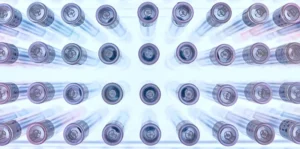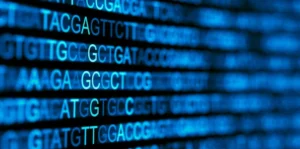SEPTEMBER 22, 2014
What is Forensic DNA Testing?
Forensic DNA testing is the use of DNA testing in solving crimes and it has become very useful for law enforcement and achieving true justice. DNA testing has proven useful in both convicting and exonerating criminal suspects in both current and cold cases. Additionally, progress in forensic DNA testing enable results to be provided more quickly and accurately.
Popular television programs such as the CSI series, Cold Case, and Forensic Files have increased public knowledge about the usefulness of forensic DNA in solving crimes. Because each person’s genetic make-up is unique, the results of forensic DNA testing are highly reliable and are often used by the legal system to convict or exonerate suspects in crime investigations.
Collecting DNA Evidence
By virtue of the meaning of the word “forensic”, this type of DNA testing pertains to using scientific knowledge to solve crimes. DNA evidence was first used in England in 1985 where a 17 year-old boy was suspected of raping two young women; DNA exonerated the boy, and the real perpetrator was eventually caught.
In the United States, the first case to use DNA evidence was a case in New York in 1987. The evidence was explained by Dr. Michael Baird, now the Laboratory Director at DNA Diagnostics Center. Since then, using DNA evidence has become an increasingly reliable method to help solve crimes.
Part of the reason DNA evidence is so useful is because DNA is inside every part of the body including:
- Hair strands or follicles
- Blood and bodily fluids including sweat, saliva, mucus, etc.
- Fingernails, skin cells and bones
Such samples are often found on:
- Clothing, including socks, sweatshirts, underwear and hats.
- Bed sheets or bath towels
- Discarded tissues, condoms, bandages, cigarette butts, etc.
- Drinking glasses and silverware
- Abandoned weapons, tape, or gloves, and more.
Sweat, skin cells, blood, bodily fluid, and hair samples are often found at crime scenes. Samples are collected by swabbing or by preserving any item on which DNA could reside. In the past, law enforcement departments have been criticized for poorly handling evidence in investigations, which can have disastrous results. So, regardless of how robust forensic DNA testing becomes, the utmost care should be taken at all times to eliminate the possibility of human error.
Conducting a DNA Analysis
Once DNA evidence is collected, it must be compared to another sample to achieve a match. The most common four potential results of a forensic DNA test are:
- Inclusions, which occur when a sample is consistent with the unknown sample collected from a crime scene.
- Exclusions mean that the sample provided by the known contributor does not match the unknown sample from the crime scene.
- Inconclusive Results could occur for when the unknown sample yields partial or no results or there are no known suspects available to compare to the crime scene DNA samples collected.
- No DNA obtained meaning that no DNA was extractable from the provided sample.
To both determine and refine matches or inconclusive results, the DNA samples collected undergo an analysis using several DNA testing systems, the most common of which are:
- Short Tandem Repeat (STR) analysis tests loci on nuclear DNA; there are 13 STR loci in the CODIS index (Combined DNA Index System), which is the Federal Bureau of Investigation’s support program for criminal justice DNA databases. CODIS’ mission is to aid investigations, and as of June 2014, CODIS produced over 250,809 hits assisting in over 239,317 investigations.
- Y-Chromosome Short Tandem Repeats (Y-STR) targets the male or Y Chromosome of a provided sample, increasing the validity of results.
- Mitochondrial DNA (mtDNA) Sequencing tests samples that are in the mitochondrion and that otherwise lack the ability to be tested by other means. This form of testing is especially useful in solving cold cases or where samples might be degraded.
When DNA results are confirmed, the likelihood of inaccuracies provided no human error occurred is practically infinitesimal.
The Uses of Forensic DNA Testing
Conclusive DNA test results have innumerable capabilities within the legal system. Thanks to TV crime dramas, the most commonly recognized use of forensic DNA testing is courtroom convictions. However, DNA has also been widely used to exonerate alleged criminals as well. To date, more than 300 people have been freed thanks to DNA analysis; around 20 of those people were on death row.
- Cold Cases have been able to be solved thanks to DNA evidence as well as local and national DNA databases like CODIS. Advents in forensic testing like new Rapid DNA technology expedites DNA testing from weeks or months to mere hours. Rapid technologies will enable labs to quickly process new cases providing time to focus on backlogs.
- Forensic Paternity testing is useful in missing persons or victim identification when a suspected family member is able to provide a sample. It is also helpful in proving rape or incest cases when conception results.
Over the past 29 years, DNA testing has revolutionized forensic investigations. Forensic DNA testing provides stronger results whether they are inclusions, exclusions, or inconclusive lending to a greater confidence in the justice system. Additionally, forensic DNA testing has played a significant role in righting wrongs where the justice system has failed, largely due to less than accurate evidence. The future of this science holds promise that it will not only be more accessible but also more reliable.
About DNA Diagnostics Center (DDC)
DNA Diagnostic Center is the world leader in paternity and relationship testing. We serve healthcare professionals, government agencies, and individuals around the world to determine family relationships with trusted accuracy.
More Questions? Don’t hesitate to call us: we’re here to help!
CALL NOW





